LAB REPORT
Science and Technology Making Headlines
March 9, 2018

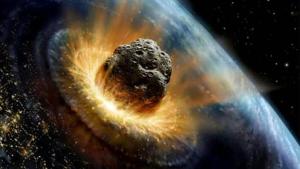
An asteroid collision depiction. Image courtesy of NASA.
HAMMER time
By Sept. 21, 2135, there is a 1 in 2,700 chance that the asteroid Bennu, a boulder the size of a village, will hit Earth. How do you defend against that?
Government scientists now have an official plan, just in case: They’ve designed a spacecraft to hit any large oncoming asteroids with a nuclear explosion.
The Hypervelocity Asteroid Mitigation Mission for Emergency Response (HAMMER) spacecraft — a collaboration between the National Nuclear Security Administration, NASA and two Energy Department weapons labs — would either steer its 8.8-ton bulk (called an “impactor”) into a small asteroid or carry a nuclear device to deflect a big one.
“If the asteroid is small enough, and we detect it early enough, we can do it with the impactor,” said physicist David Dearborn of the Lawrence Livermore National Laboratory. “The impactor is not as flexible as the nuclear option when we really want to change the speed of the body in a hurry.”
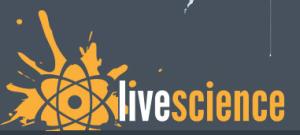
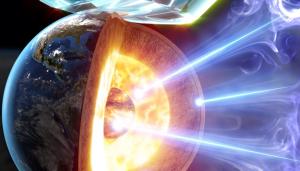
At the extreme temperatures and pressures deep within Earth's core, the noble gas xenon can react with metals like iron and nickel. Image by Adam Connell/LLNL.
Where did all the xenon go?
Earth's xenon is missing. But a new experiment suggests it might have been right under our feet all along.
Earth's atmosphere contains less xenon than it should, at least based on studies of some of the oldest space rocks in the solar system. Carbonaceous chondrites contain the most primitive materials known in the planetary system. They're made of the same stuff that eventually coagulated to make planet Earth. But carbonaceous chondrites contain way more xenon than Earth and its atmosphere.
Xenon is a noble gas. And noble gases don't react very well with other elements, so Earth's missing xenon shouldn't have been used up in chemical reactions over the eons, according to Lawrence Livermore physicist Elissaios Stavrou. Trying to figure out where it went, Stavrou and his colleagues tested the hypothesis that the missing gas could be camped out in Earth's core.

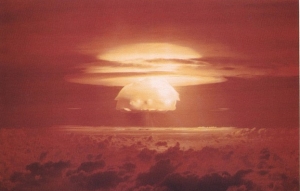
Detonated on March 1, 1954, Castle Bravo remains the most powerful nuclear device detonated by the United States.
Test films go bang
Video footage of a test of the most powerful bomb ever detonated by the United States has re-emerged online.
The footage shows a huge mushroom cloud rising high into the sky after the Castle Bravo bomb was detonated at a remote atoll in the Pacific Ocean.
The force of the 1954 test, with a yield of 15 megatons of TNT, greatly exceeded expectations.
More than 120 clips of newly declassified nuclear tests are posted on YouTube to preserve the historic footage online. A Lawrence Livermore weapons physicist is meticulously scanning films of detonations captured by U.S. military researchers between 1945 and 1962.
As well as saving the footage before the film deteriorates, nuclear scientists are using the scanned footage to improve weapons simulations.

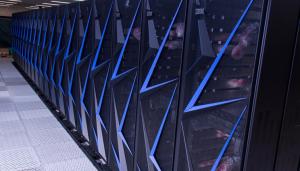
Lawrence Livermore National Laboratory is preparing Sierra, the Lab’s next advanced technology high-performance supercomputer. Sierra will be used for stockpile stewardship.
Supercomputers make it big
The Department of Energy and its hardware partners – Intel, IBM, Nvidia, Cray, Hewlett Packard Enterprise, and AMD – got a financial boost of almost a half billion dollars in research, development and deployment investments in the latest budget numbers. In addition, the timetable for the first U.S. exascale system to launch accelerated from 2023 to 2021.
This year, DOE received $636 million for exascale computing, a $376 million increase from the FY 2017 allocation. The money would be spread across two different offices within DOE – the Office of Science and the National Nuclear Security Administration (NNSA).
Funding for NNSA for exascale efforts includes $23 million for the Exascale Computing Facility Modernization project at Lawrence Livermore National Lab.
Exascale has become increasingly competitive over the past few years. Exascale systems promise 50 times the performance of current 20 petaflop-capable supercomputers to handle the highly complex workloads that current systems can’t run. This will become important given the growth of such trends as data analytics, machine learning and artificial intelligence.

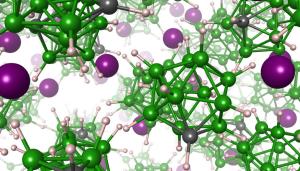
Artist rendering of the solid electrolyte material, showing lithium atoms (purple) moving within a matrix of anions composed of boron (green), carbon (gray) and hydrogen (white) atoms. Image by Joel Varley/LLNL.
Batteries get charged up for catalysts
In new research by an international collaboration jointly led by Lawrence Livermore National Laboratory and the National Institute of Standards and Technology, the team discovered why substituting one boron atom for one carbon atom in a key battery electrolyte material made lithium ions move even faster, which is attractive for a more robust solid-state battery.
This is an example of what scientists refer to as “frustration”: the dynamics of the system ensure that lithium is never satisfied with its current position, so it’s always moving around.
Solid-state lithium-ion batteries can provide improved safety, voltage and energy density compared with today’s batteries, which use liquid components. However, solid-state batteries are still in an early stage of development, with very few commercialized to date.





